#s2 round 1c
Explore tagged Tumblr posts
Text
Poll: Round 1c #4
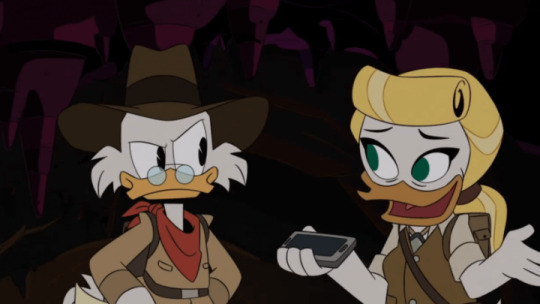

[Image ID. An image of Scooge McDuck and Goldie L'Gill from Ducktails 2017, and an image of Cavendish and Dakota from Milo Murphy's law. End ID]
*Reminder that Break up is being used loosely here and not all relationships may be romantic in nature
Propaganda under cut:
Scrooge and Goldie:
Scrooge McDuck and Goldie O'Gilt from Ducktales 2017, who keep going on and off and who the fuck knows for centuries until Goldie can be less of a selfish backstabber for once. This happens because of shenanigans involving Ponce de Leon, a Franken-baby, nasty pool water, and swordfighting, because this is Ducktales we're talking about.
Cavendish and Dakota:
They have two break ups during the show. The first is during the Christmas episode, where during a work Christmas party they argue over who should have eaten the last egg roll. This leads to them falling out so badly that they don’t speak for 20 years- during that time, Dakota becomes famous and successful but is very regretful, while Cavendish becomes, and I quote: “an old man with unfinished business.” They both end up breaking dozens of time travel laws to go back in time to try and stop their past selves from breaking up. They figure it out eventually. Remember, this was all over an egg roll. I just really need to hammer in that they broke up a decades old friendship/relationship/whatever it is they’ve got going on over an egg roll.
and then, more related to the actual plot of the show, is their multi episode break up in s2. They have an argument, and Cavendish decides to use a device on Dakota to wipe his memory, so he can leave to go investigate aliens. Dakota is very unhappy about this, understandably. He teams up with Dr Heinz Doofenshmirtz to try to find Cavendish, and ends up having an argument with him because he isn’t Cavendish. They make a Cavendish-platypus hybrid to help them “get into his head”. Meanwhile Cavendish ends up getting himself trapped in an alien ship. They have a nice reunion when he gets rescued.
#poll tournament#tournament poll#poll#scrooge mcduck#goldie o gilt#ducktales#milo murphy's law#dokota milo murphys law#cavendish milo murphys law
38 notes
·
View notes
Text
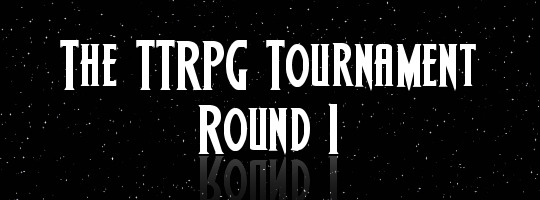
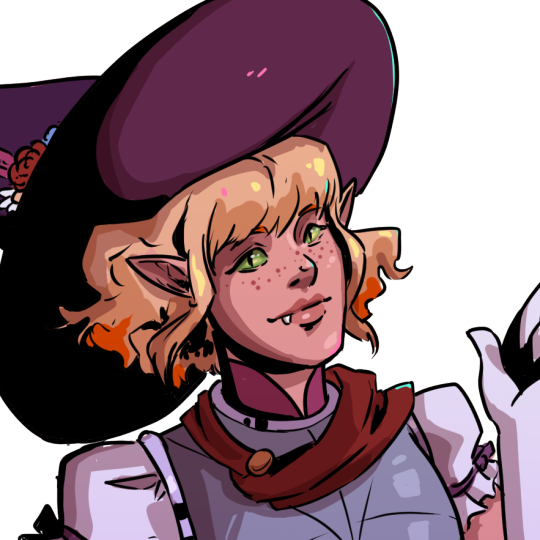
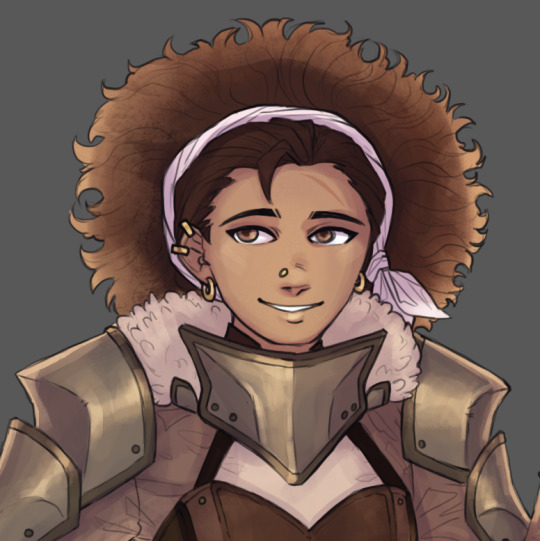

Why you should vote for each of them and full art below!
Rosalie von Heydenhofen (by @sessenaa for Dungeons & Dragons)

(art by @sessenaa)
Baby…baby girl…
2. She is a wanted enemy of the state for attacking a head of state (he deserved it)
3. She is probably the most morally sound member of her group
4. She is going through it and deserves something nice to happen to her
5. Her patron is a demon who loves her so much that she decided she doesn't want to be evil anymore
6. She is a cool magical girl!
Amalthea (by @dt75artblog for The Dragon's Table)

(art by @dt75artblog)
Amalthea is a 15 year old pirate queen! Her armada is made of old sailboats, her ocean is a medium-sized lake, and her crewmates are all teens (or younger), but I assure you, the bloodshed is real. She values the little things in life, such as good food, riches beyond measure, and finding the guy who killed her parents when she was a baby (so she can rip him to shreds). She has a magic bracelet that turns people who wear it into sea slugs, so watch out competition!!!
33 notes
·
View notes
Text
Juniper Publishers- Open Access Journal of Case Studies

Late presentation of Two Rare Sacral Spine Tumors challenges of Diagnosis and Treatment in a Low Resource Setting
Authored by Alexis DB Buunaaim
Abstract
Lower back pain with or without an associated mass should be examined thoroughly by physical examination aided with radiological imaging. Described here are two young male adults; 29 and 30 years of age with lower back pain associated with lumbar masses. These patients initially treated themselves with herbal preparations without success. Diagnoses of chordoma and myxopapillary ependymoma were made in the 29 and 30-year old patients respectively after physical examination and imaging. These diagnoses were confirmed by histopathological investigation. Both patients requested discharge against medical advice. Unfortunately, they died at home within one month after discharge.
The diagnosis of chordoma and myxopapillary ependymoma can be very challenging and requires a multidisciplinary approach involving a radiologist, pathologist, oncologist and an orthopedic surgeon.
The poor outcomes in both patients could be attributed to ignorance, entrenched cultural beliefs, late diagnosis from low index of suspicion and lack of requisite diagnostic tools. This indicates that patients are still dying of treatable conditions in low- and middle-income countries especially in Africa. We propose awareness creation among clinicians, and a fund to be established both locally and globally to help with the diagnosis and treatment of sacral tumors.
Keywords:Sacral chordoma; Myxopapillary ependymoma; Late presentation; Spinal tumors
Abbreviations: CT: Computed Tomography; MRI: Magnetic Resonance Imaging; CNS: Central Nervous System; MPE: Myxopapillary Ependymoma; CBC: Complete Blood Count; LFT: Liver Function Test; RFT: Renal Function Test; ESR: Erythrocyte Sedimentation Rate
Introduction
Chordomas are rare slow growing malignant bone tumors that arise from embryonic notochordal remnants [1,2]. They account for 1-4% of all malignant bone neoplasms [3,4]. They occur in various anatomic locations with the sacral region being the most predominant site and lumbar spine being the least (sacrum 60%, spheno-occipital 25%, cervical 10% and thoracolumbar 5%) [5]. Symptoms generally depend on their location but patients typically present with pain at the initial stages [4,6-11]. Some patients may present with constipation, urine and or fecal incontinence due to autonomic nervous system involvement [6].
Chordomas pose diagnostic challenges to physicians [1,4]. However, diagnosis can be made through the use of CT and MRI, but histopathology is the mainstay of establishing diagnosis [1,2,4,6,12]. Surgical resection (marginal en bloc) with or without adjuvant radiotherapy is the treatment of choice [1,2,6,13,14]. Chordomas have poor prognosis because of local recurrence and metastasis [6,12], hence require yearly follow up even after 20-years of surgical resection [12].
Ependymomas are primary central nervous system (CNS) tumours that arise from the ependymal cells of the choroid plexus. They account for 2% of all primary CNS tumors [15]. They are divided into 5 subtypes: sub-ependymoma (grade I), myxopapillary ependymoma (grade I), ependymoma (grade II), RELA fusion-positive ependymoma (grade II or III), and anaplastic ependymoma (grade III) [16]. It is twice as common in men than women with an average age of presentation of 36yrs [16].
Myxopapillary ependymoma (MPE) commonly occur in the conus medullaris, cauda equina and filum terminale of the spinal cord [17]. MPE are grade I tumours and so they tend to grow slowly [18]. They have a high survival rate (98.4%) if early surgical intervention is performed [18].
We present two cases of rare spinal tumours; chordoma and myxopapillary ependymoma in Northern Ghana, who presented late to our institution for care when the initial herbal medical treatment failed. Clinical examination aided by imaging resulted in the suspicion of tumor. Histopathological examination of biopsy samples taken were confirmed as chordoma and myxopapillary ependymoma. We lost both patients a month after discharge against medical advice. This case report illustrates how late presentation and misdiagnosis results in poor outcomes of patients in low and middle resource settings.
Case One
Clinical history and physical examination
A 30-year old male presented with low back pain of 15 months duration. He also had a fungating lower back mass of 6-month duration. The patient initially managed the pain with over the counter analgesics until 10-months prior to presentation when he noticed a mass in his lower back. He went to a traditional healer where he was treated with herbal medications for 6-months because he thought it was a spiritual ailment. During this period, he began to experience a gradual loss of power in the lower limbs and this was associated with urine and faecal incontinence. He was bedridden and thus developed decubitus ulcers and the mass became ulcerated. He reported to a primary health facility because of the fungating mass and inability to move his lower limbs, where he was referred to our facility (tertiary).
On examination, he was a chronically ill looking man who had conjunctiva pallor, anicteric and mildly dehydrated. Systemic examination was essentially normal. He had a fungating lower back mass measuring 9×6cm, hard with irregular edges. The power in his lower limbs was 0/5 with lax anal sphincter tone.
Imaging results
Lumbosacral CT scan showed a heterogenous sacral mass measuring 5.8×6.5×6.2cm with bony distraction of the sacrococcygeal spine (Figures 1A & 1B). Lumbosacral MRI showed a 6.8×7.0×6.8cm lobulated heterogenous T1W hypointense and T2W hyperintense right sided mass involving the vertebral bodies, laminae and pedicles of S1, S2 and S3. The mass extends across the sacroiliac joint and involves the right iliac bone. It encases the right S1-S3 nerve roots with attendant severe canal stenosis. There is also infiltration of the right erector spinatus muscle posteriorly (Figures 1C & 1D).
Hematology and biochemistry results
Complete blood count (CBC) showed a low hemoglobin. Renal function and liver function tests (RFT and LFT) were essentially normal and the erythrocyte sedimentation rate (ESR) was elevated.
Histopathology results
Histopathology from an incision biopsy showed a cellular lesion with bubbly myxochondroid stroma. The cells were illdefined with round oval nuclei. Some of the cells had vacuolated cytoplasm and prominent vesicular nuclei while others had small with inconspicuous nuclei and no visible nucleoli. The stroma was infiltrated with inflammatory cells. The histopathological findings confirmed the diagnosis of Chordoma in line with the clinical diagnosis. Immunohistochemical examination could not be performed by our laboratory.
While conducting a metastatic workup patient requested to be discharged against medical advice for care at home and died a month afterwards.
Case Two
Clinical history and physical examination
A 29-year old male who presented with a 12-month history of low back pain and a slowly growing mass in the lower back. The pain increased in intensity over the period and was associated with lower limb weakness and urine and fecal incontinence. He resorted to herbal medications as well as over the counter drugs for 7 months. He presented to a Primary health facility where he was misdiagnosed as Pott’s disease and treated with antituberculous drugs for 5 months before referral to our facility because of lower limb weakness.
On examination, he was a chronically ill looking man who was moderately dehydrated. Systemic examination was essentially normal. He had a mass in his lower back measuring 7×5cm, it was hard, nodular, tender with irregular edges. The power in his lower limbs was 4/5 and anal sphincter tone was good.
Imaging results
Lumbosacral CT scan showed a heterogenous soft tissue mass involving the sacrococcygeal spine with bony distraction. It invaded the distal spinal canal and the surrounding soft tissue. The lumbar vertebral bodies and their intervertebral disc were normal (Figure 2A, 2B & 2C). Lumbosacral MRI showed an ill-defined sacrococcygeal tumour measuring 11.6×8.9×15.6cm with bony distractions of the sacrum and coccyx, extending to L3 vertebra and invasion of the distal spinal canal. There was severe spinal canal stenosis from L3 to the sacral elements with destruction of the involved vertebral bodies (Figure 2D).
Hematology and biochemistry results
CBC, RFT and LFT were essentially normal with elevated ESR.
Histopathology results
Histology from a core biopsy showed fragments of fibrocollagenous tissue infiltrated by an epithelial lesion with papillary pattern of growth. There were also areas of myxoid changes. This confirmed the diagnosis of myxopapillary ependymoma was made and this agreed with the initial diagnosis made by the clinicians. Immunohistochemical examination could not be performed by our laboratory.
The patient requested discharge against medical advice on financial grounds. He succumbed to the disease after 3 months of discharge.
Discussion
Chordomas are rare slow growing malignant bone tumors accounting for 1-4% of all malignant bone neoplasms [1,6]. Because of their slow growing nature, they are clinically dormant until later in the course of the disease [4]. The symptoms generally depend on their location with commonest being pain and neurologic symptoms [4,6-11]. For these reasons, most patients present to health facilities when the course of the disease is advanced. However, in low resource settings where the hospital is usually not the first point of call for a lot of patients (but the Traditional healer), patients present much later to the hospital when all hope is lost. This leaves the surgeon with very few options to work with. This was demonstrated as it took 15 months from the onset of symptoms, to presenting to a health facility. The patient in this current case report presented with very advanced form of the disease. In poor resource settings, most patients will resort to the Traditional healer whose services are relatively affordable compared to Orthodox health facilities, as illustrated in this case.
Mcmaster et al. [19] in 2001 reported the incidence rate of chordoma as 0.08 per 100,000 in the United States [19]. They also reported that chordomas are uncommon in blacks and people under 40yrs [19]. They observed a male predominance with an incidence rate of 0.10 as compared to females with 0.06 [19]. Murphey et al reported the male to female ratio of 2-3:1 [4]. The current case report from Northern Ghana involved a black male of 39-years of age. Being a male increased his chances of developing a chordoma, but his race and age reduced his risk. This accounts for the rarity of such cases in our settings and sometimes contribute to the low index of suspicion by most physicians. The young age group and the female sex are more likely to develop cranial chordoma [19] which contrast with the sacral presentation of case 1.
Diagnosing chordoma can be very challenging [1,4] but radiological imaging (CT and MRI) play a crucial role in preoperative diagnosis of chordoma [1,2,4,6,12]. Murphy et al illustrated that, most primary tumors of the spine present with characteristic radiologic features on CT and MRI [4]. With the aid of diagnostic images and the appropriate technical human resource, diagnosis can be made easily.
It is worth noting that plain radiographs cannot be used in diagnosing myxopapillary ependymoma (MPE). In low resource settings, primary and secondary health facilities only have access to X rays, hence the reason for misdiagnosis of case 2. The patient was misdiagnosed as Pott’s disease and received tuberculosis treatment regimen for 5 months which delayed time to definitive diagnosis. He was referred from the primary health facility to a tertiary facility for specialist care. A lumbosacral CT and MRI was done and a core biopsy taken for histopathology to confirm the diagnosis.
Both chordoma and MPE have good prognosis when they present early because they can be completely resected [4,18]. Prognosis is largely poor if both chordoma and MPE are left untreated [4,6,18].
In our opinion, poverty and ignorance is the main reason for late presentation of most patients in low resource settings of rural Ghana. Patients are more likely to resort to Traditional healers as their first point of call because their services are cheaper and are more accessible compared to orthodox health services. Also, the bureaucracies in the orthodox health services can be frustrating to patients. Our primary and secondary health services are under resourced both in diagnostic capability and human resource, which accounted for the misdiagnosis.
The lesson from these cases is for clinicians to develop a high index of suspicion and early referral of patients to appropriate centers for treatment especially when there is a suspicion of a cancer. Policy makers in low resource settings should work towards developing the referral and diagnostic capabilities of their primary and secondary health services. They also need to reduce the cost of diagnostic investigations especially for cancer through an established fund to enable patients present early to health facilities for prompt diagnosis and treatment.
To know more about Juniper Publishers please click on: https://juniperpublishers.com/manuscript-guidelines.php
For more articles in Open Access Journal of Case Studies please click on: https://juniperpublishers.com/jojcs/index.php
#Juniper Publishers#juniper publishers journals#Endocrinology#Epidemiology#General Surgery Genetics#Hospice and Palliative Medicine#Neuroscience
0 notes
Text
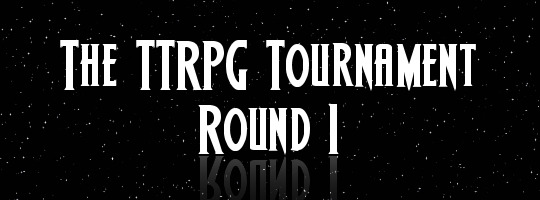
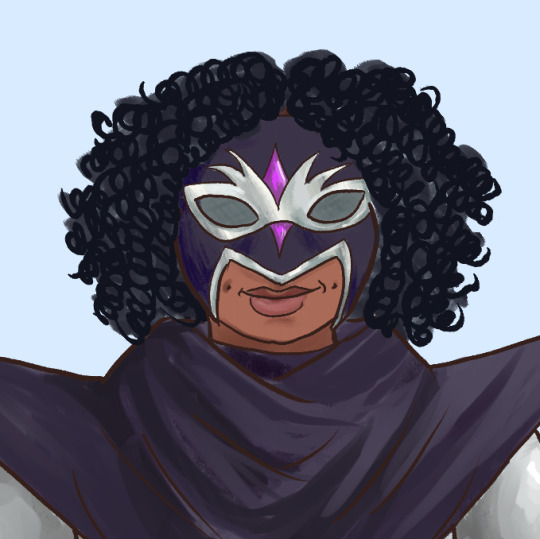


Why you should vote for each of them and full art below!
Rishika Díaz (by @flockofdoves for Masks)
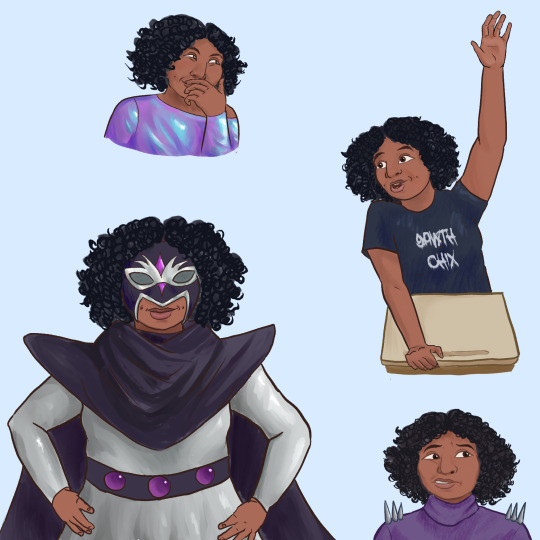
(art by @flockofdoves)
in the year 202X, local Halcyon City newspapers report occasional spottings of a new superhero in town, a teenage girl with portal and teleportation powers calling herself “The Future Violent”.
in a different timeline some ambiguous amount of generations later, capitalism and global warming have gotten even worse, and superheroes are recruited to serve the interests of a few big corporations, who now even more explicitly are in control of the state and have a monopoly on legitimate violence. a 17 year old pores over a very old family photo, family from his dad’s side generations ago, smiling happily in their living room. he hopes that maybe, just maybe, he can take his ability to teleport anywhere he has a clear sensory grasp on to its most extreme, and do something he’s never done before, travel to the the past. to him it feels like the only hope at saving the world.
somehow, they succeed! they pop into their ancestor’s living room right after the picture was taken, aged picture in hand. in stuttering through an explanation in a post time travel haze, the name they’ve always gone by is misheard as Rishika, and on a whim, they go along with it.
rishika’s family (who are now referred to as her aunt, uncle, grandma, and nieces and nephews) fully accept rishika into their home. rishika is open with them from the beginning about their goals of stopping evil corporations, which is all well and good to their family as long as he’s safe about it, but he still needs to go to school and get decent grades while he’s at it.
using their powers for something as extreme as time travel has scrambled their brain a bit. their memory of the future is very spotty. in their meandering first attempts at stopping evil corporations, they end up encountering two other teens with powers from their school, and begin to work as a superhero, getting involved with situations not directly related to preventing their future, developing a costume and superhero name, and omitting all this while talking with family so as to not worry them too much.
when the first news reports of Rishika’s team’s activity refer to The Future Violent as a girl, for some reason rishika really enjoys that. she might as well have her teammates always refer to her as such when in costume, after all it’ll help make it harder to find out her secret identity as a boy!
when not spending increasing amounts of time embroiled in heroic situations, rishika loves getting to listen to long lost recordings of their favorite “retro” emo bands, running a fanblog for future revolutionary martyrs and now famous on the local scene band made up entirely of superheroes, The Gawth Chix, and modifying clothes in baffling ways (her friends aren’t sure what is future fashion and what is just rishika being rishika).
coming from their even more abysmal capitalist propaganda filled future education, history is by far their favorite school subject, but their history teacher is never quite sure what to do with the combination of their clear enthusiasm and huge gaps in basic historical knowledge.
rishika is open about casually mentioning they came from the future, but theres no real precedent for that, and most people just dismiss it as some sort of weird joke.
between their gaps in memory and knowledge both of past and future, juggling a new and dramatically different school system, a new family life, and a new identity as a superhero, and the nagging but vague feelings about identity starting to emerge for them, rishika has a lot of growing and reflecting to do, even as she feels the constant weight of saving the entire world on her back!
(a note on pronouns: if its not obvious, i intend rishika to be a trans girl or nonbinary transfem person who has not really consciously connected that for herself yet, but who is on the way to soon realizing that. in school and at home she uses he pronouns by default, but uses she pronouns in her superhero identity. her closest friends are also her superhero teammates, and they have started to occasionally slip up and use she and they pronouns even sometimes outside of superhero contexts. despite how this technically could help people connect her hero and personal identities, she hasn’t corrected this any time its happened, instead just privately going like .’whoa..’ when referring to her as a character, i mostly use she and sometimes they, but he can contextually make sense too like how i used it here. so feel free to use your judgement when referring to her)
Benedikt Ignatov (by @19orionis for Dungeons & Dragons)
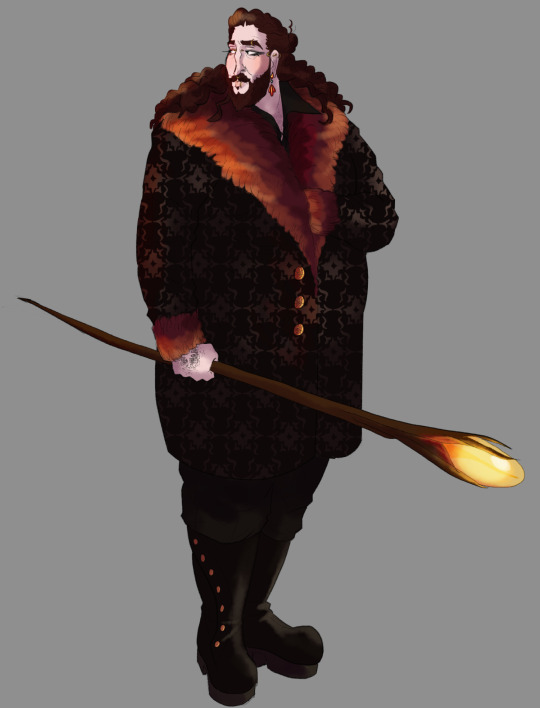
(art by @19orionis)
Benedikt has learned not to fly off the handle very often, appearing relaxed and even at times sleepy, making his disastrous slip-up (more on that below) all the more difficult for him to think about. In daily life, he’s a chill, artsy guy, who, aside from living off the land, occasionally ventured into town to sell his colorful work. He says the occasional weird, funny thing and would be a great guy to smoke with. Despite not having as much in the way of physical strength as one might expect, his tall, large stature lends him skill in quiet intimidation. Initially coming off as a chaotic neutral, he does find fulfillment in listening to and protecting those who need it.
After being robbed and accidentally decimating his home woods in a firey rage of his own making, mortified, Benedikt fled his home continent by stowing away on a ship, and traveling to a new frontier where he is currently posing as a naturalist researcher, using his sketching abilities and background as a forester to make the act all the more convincing. As a totally human sorcerer with wild magic, he’s never had any idea where his powers came from, and is using the adventuring opportunity to hopefully gain some insight on what he is. And maybe find some community along the way. He’s always wanted a nicer family.
38 notes
·
View notes
Text
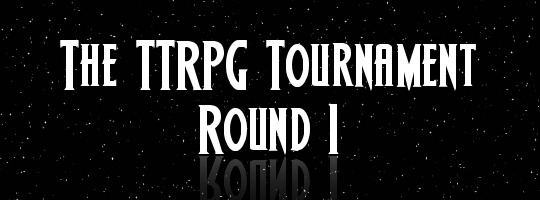



Why you should vote for each of them and full art below!
Aurora Byford (by @scattereda for Monster of the Week)

(art by @rosenkranz-does-things)
Aurora is 50's america's most normalest woman who's definitely not actually a changeling eating people in the woods. She was having a great time amongus-ing the group of monster hunters she joined to stay under the radar until the world's worst man dragged her to the moon with him (which will hopefully be exploding very shortly)
Krogu Thunderhowl (by @lammergeared)

(art by Lammergeared)
Krogu is an Orc who considered cursed by his clan because his father was considered a coward, and was abandoned by his mother. He dedicated his entire life to proving himself. He is strong, highly skilled, clever and tactical but sometimes his ego gets the better of him. He has a deep heart, and a desire to be loved but his communication skills are almost as bad as his fighting skills are good.
43 notes
·
View notes
Text
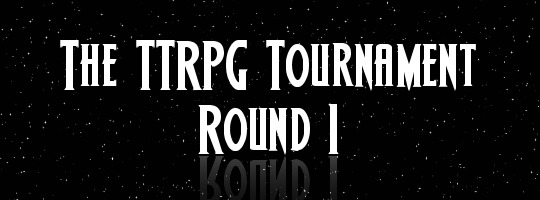
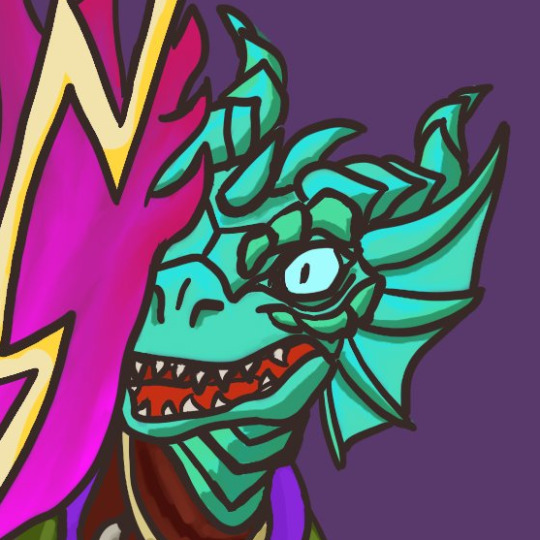
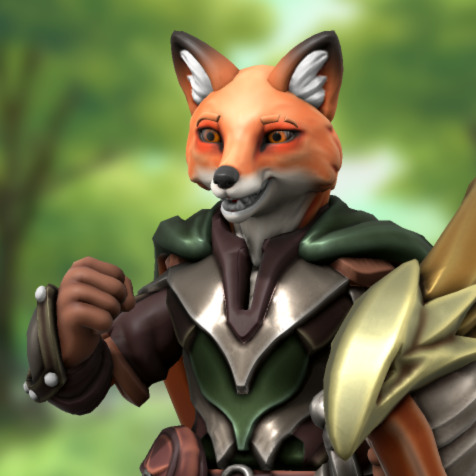

Why you should vote for each of them and full art below!
Cy (by @theambivalentagender for Dungeons & Dragons)

(art by @theambivalentagender)
Cy is a wild magic sorcerer blue dragonborn. They were raised by their grandparents after their adventurer mother dropped them off at their doorstep. As they grew up in a small dragonborn village, elders in the village saw them as a ticking time bomb due to their unpredictable and often explosive expressions of magic, to the point where several of the elders tried to push getting them lobotomized.
As they grew up, Cy found community in academics, studying to learn more about nature. After being told they were an "unnatural curse" in their hometown they felt called to prove themselves and beings like them as a natural part of the world.
What Cy doesn't know, however, is that they aren't quite part of this world - the truth is, their mother had managed to travel to another plane, where they fell in love with a chaos dragon.
In personality, Cy has always tried solving problems through unconventional means. Their studies in the natural world, particularly into phenomenon that is not fully understood by the general public or academic society, give them a unique advantage when dealing with certain challenges as an adventurer. They can come off as blunt, as they don't like wasting time dealing with small talk or "buttering others up." They also have a firm belief that no knowledge should be forbidden to others and take both legal and illegal means to release "forbidden" works to the public. They also drink way too much coffee.
Vivandere "Viv" Monteblac (by @aroace-sunbro for Dungeons & Dragons)
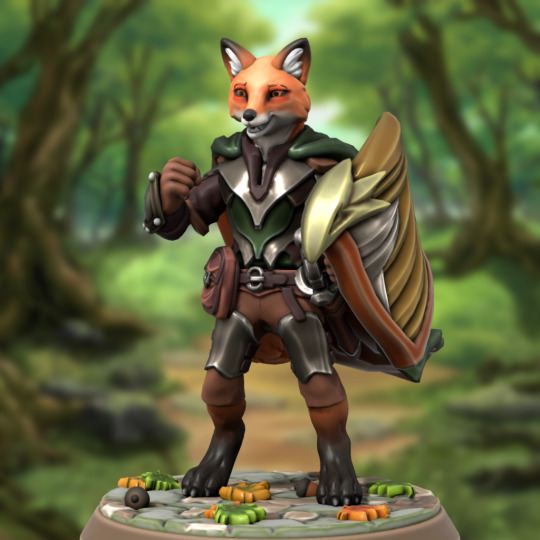
(art made at Hero Forge)
This fox kid* is four and a half feet of anti-authoritarian gremlin energy. Probably best know for almost single-handedly strong-arming the regional government into peace talks with a rebelling army, vetoing fights through clever tactics and superior mobility, and accidentally surviving saving the region. Also, their canon gender is "What are you, a cop?" Also, also, accidentally on purpose blew themself up magicking their sword. *technically an adult
10 notes
·
View notes
Text
The winners of Round 1C are...
Vivandere "Viv" Monteblac
Amalthea
Rishika Díaz & Benedikt Ignatov (a TIE!!!)
Aurora Byford
Congratulations! You'll all be going on to Round 2!
11 notes
·
View notes